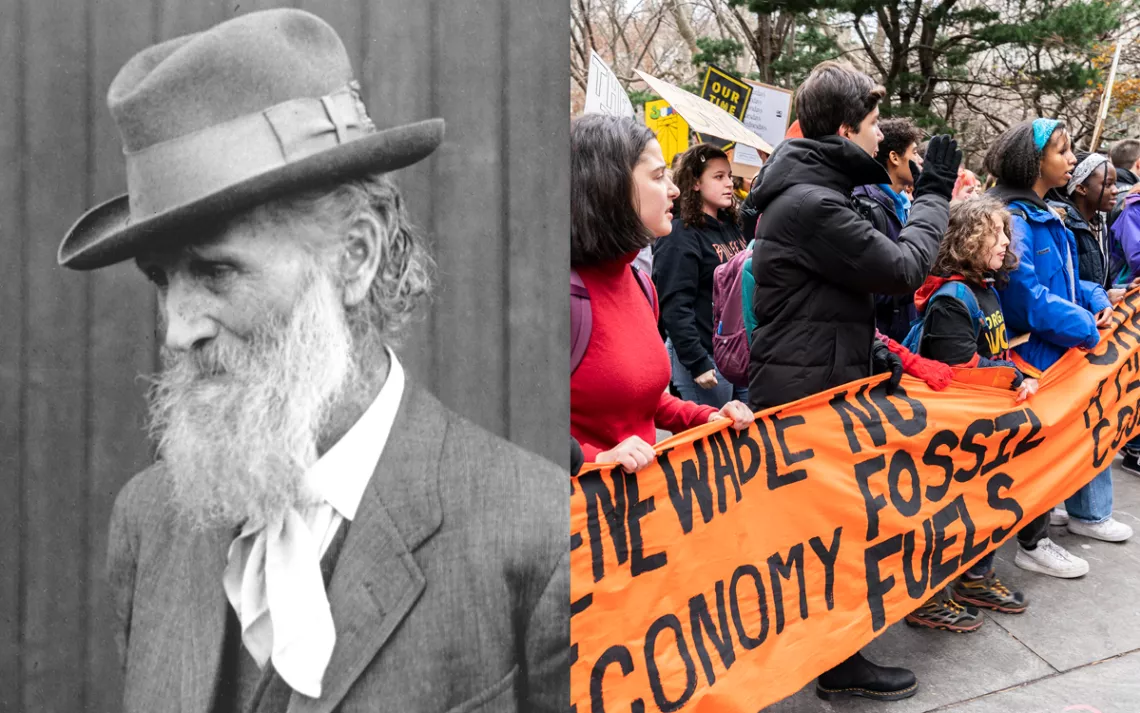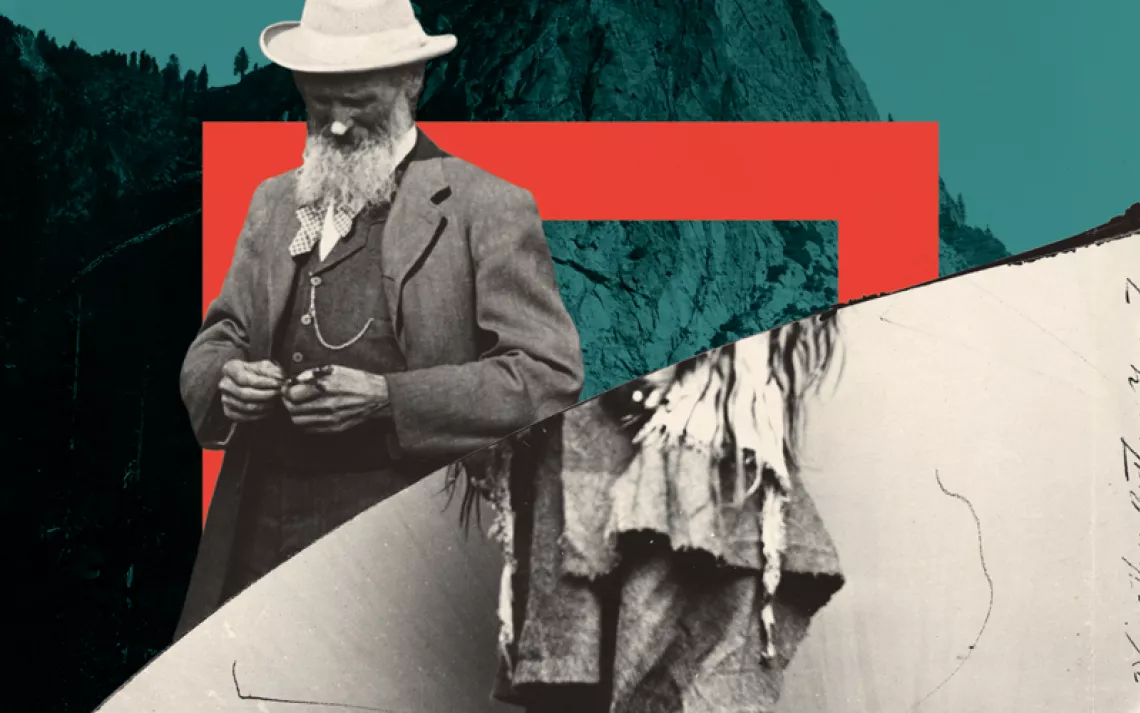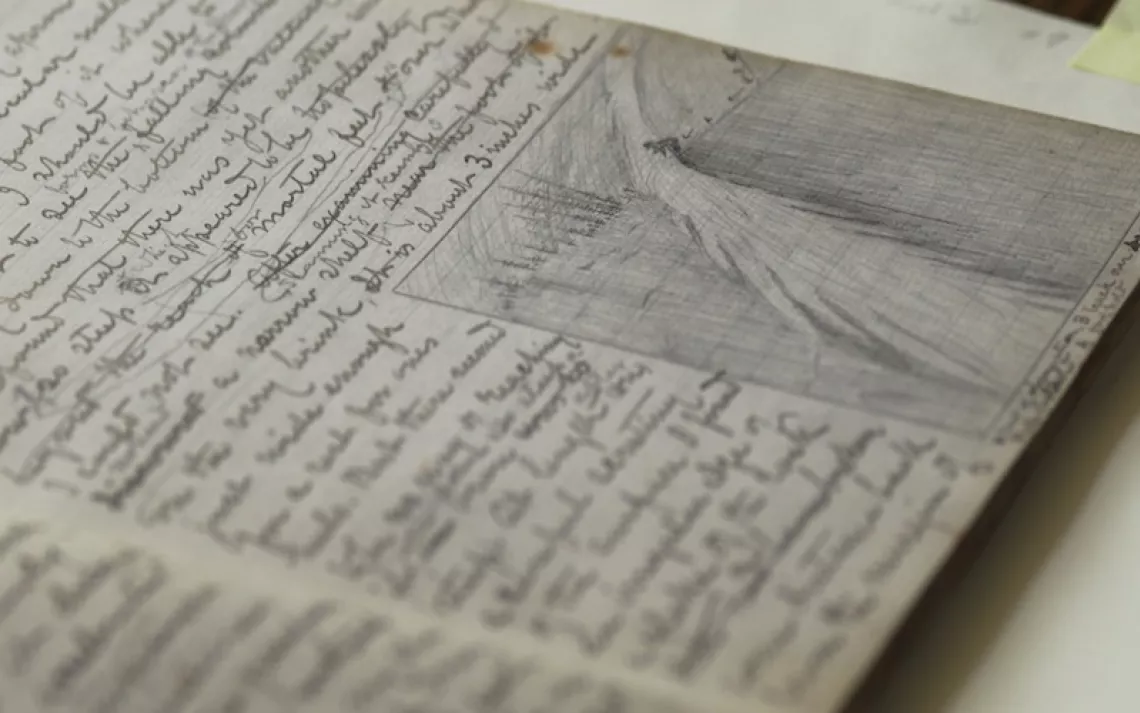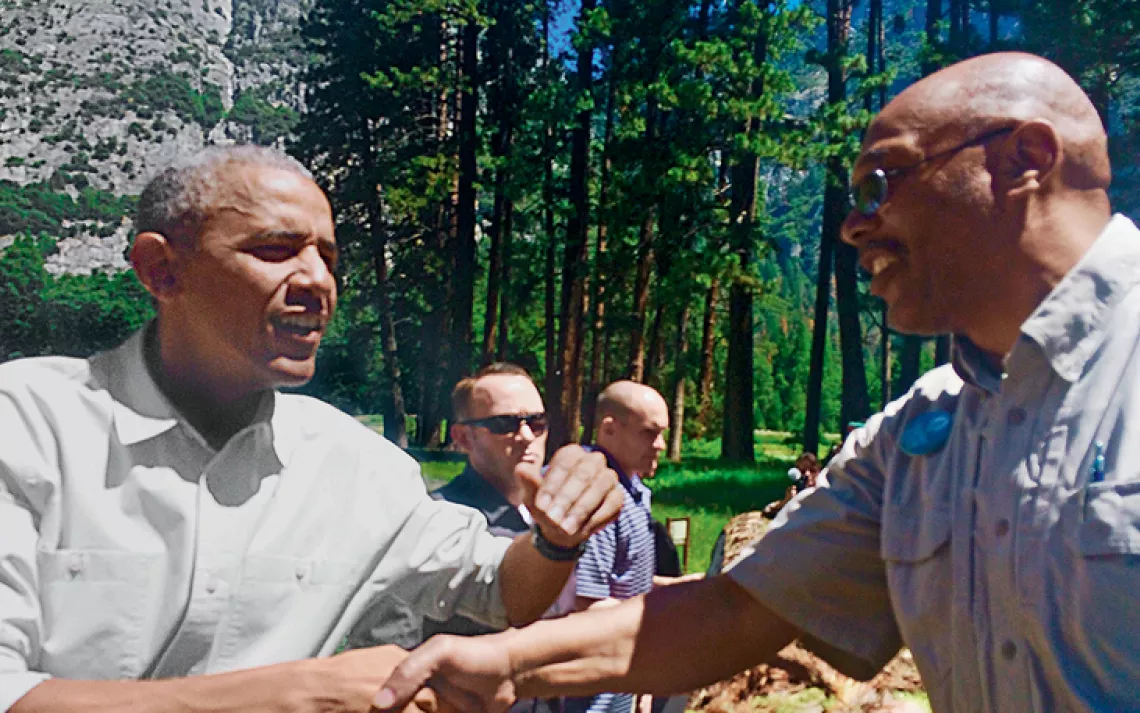Forward Ever, Backward Never
When it comes to the Sierra Club's core mission, the future takes precedence

Portrait of John Muir by Herbert W. Gleason (circa 1913). | A few hundred students and their supporters rally against climate change policies in New York City.
John Muir: Photo courtesy of The Bancroft Library, University of California, Berkeley | Students: Photo by Lev Radin/Pacific Press/Sipa USA (Sipa via AP Images)
One of the most exciting parts of producing a magazine is getting to choose what goes on the cover. Sometimes, the choice is a slam dunk. Other times, it's a tough call to decide which story most deserves to be elevated. That was the case with this issue, as we wrestled with what to highlight on this final cover of Sierra's long-running bimonthly format.
Originally, putting John Muir on the cover seemed like the obvious route. Sierra Club members feel passionately about the legacy of the organization's most well known cofounder, and we knew that rock-star author and essayist Rebecca Solnit's opinions about Muir's writings would spark productive conversation and debate among members (see "Unfinished Business"). At the same time, we had in hand a feature article about an issue that has been at the center of the Sierra Club's work for much of the past 15 years: the poisonous consequences of this country's long reliance on coal. The article ("From the Ashes") explores the question of what we should do with the 3 billion tons of coal ash waste littering the United States.
Distilled to its essence, the choice seemed to be this: Should the magazine be focused on the present or preoccupied with the past? As you can see, we decided to keep our gaze forward, because ultimately the work of a living organization is more important than the words of a dead man.
Don't get me wrong. History matters. The past shapes, and always illuminates, the present, and as Solnit writes, "part of making a better future involves reexamining the past." Literature, like that written by Muir, matters too. Prose gives form to our wonder at the natural world and can strengthen our resolve to protect it. Muir's insights are a continuing source of inspiration and energy; his oversights can be instructive. Yet when it comes to the Sierra Club's core mission of building a better world, praxis trumps poetry and the future takes precedence over the past.
As Solnit reminds us, the history of the Sierra Club has been a story of evolution, of an organization ever shifting, growing, and changing. For the better part of a century, the Sierra Club focused on preserving places from the ravages of industry. Now, in the 21st century, our labors will increasingly have to center on healing those places we weren't able to save: restoring rivers and watersheds, rewilding landscapes, repairing injustices, and—as is the case with all that coal ash scattered across the country—doing the often thankless task of cleaning up the mess.
It's a lot of work—and that's not necessarily a bad thing. This mission of revitalizing wild nature and human communities can be and should be the work of a generation, a labor that will provide millions of people with jobs of purpose, for decades to come. The tasks of healing and repair and restoration will require that we keep our faces forward, feet pointed ahead—which is exactly the posture we need.
This article appeared in the March/April edition with the headline "Forward Ever, Backward Never."
 The Magazine of The Sierra Club
The Magazine of The Sierra Club



